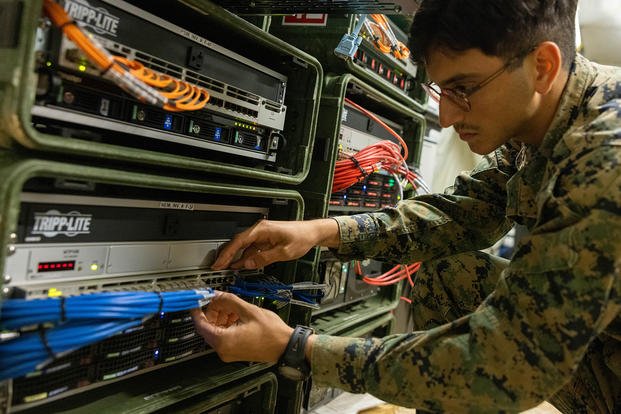U.S. military veterans transitioning into the technology job sector require more effective resources and program needs, according to a recently published government report.
As the U.S. workforce becomes increasingly technology-driven, high-tech training is critical for veterans transitioning to civilian life and pursuing stable, lucrative jobs. Prospects are dependent on whether government programs are properly managed and include sufficient oversight.
The Government Accountability Office (GAO) in its Sept. 30 report said that Veteran Employment Through Technology Education Courses (VET TEC) designed to help veterans transition into high-tech jobs, fell short of leading practices for effective pilot programs.
The $262 million initiative enrolled more than 20,000 veterans between 2019 and 2024 but has lacked sufficient staffing, oversight, and feedback mechanisms—issues that risk undermining its goal of equipping veterans with meaningful employment skills.
Military.com reached out to the GAO for comment. Most employees are off duty due to the ongoing government shutdown. Additionally, the VA did not provide additional comments beyond what was included in the GAO report.
“The Harry W. Colmery Veterans Educational Assistance Act of 2017 instructed VA to carry out a 5-year pilot program to train veterans for high-technology jobs,” VA Chief of Staff Christopher D. Syrek said in the GAO report. “The provision did not, however, provide funding for additional staff to develop and implement the program. VA had to develop and implement the program utilizing existing human capital resources.”
Shortcomings of VET TEC
Feedback from veterans revealed significant dissatisfaction.
Common complaints included misleading marketing by training providers, poor course quality, unqualified instructors, and weak support for career placement after the program. Some veterans also reported discriminatory treatment or retaliation for filing complaints.
The importance of this program lies in data that shows computer and information technology occupations are predicted to grow to about 317,700 openings per year in the U.S. over the next decade, according to the U.S. Bureau of Labor Statistics.
Veterans who want to go down the technology route can choose to do VET TEC with the VA promising to pay 50% of tuition after meaningful work is secured related to coursework, within 180 days of completion.
Despite these shortcomings, the VA did not systematically collect or analyze feedback through its own GI Bill School Feedback Tool—missing a key opportunity to identify and address program weaknesses in real time, according to the GAO.
The timing of the report coincides with the reauthorization of a new version of VET TEC being released in 2027, assessing current program shortfalls to ensure proper resources and staffing to meet the program design’s needs.
VET TEC Moving Forward
The VA oversaw applications, denying 165 of 221 provider applicants.
During this process, the VA conducted on-site visits and denied applicants due to financial or operational deficiencies, and even reported one provider to the Office of Inspector General for potential fraud.
The GAO discovered roughly $4 million in potential overpayments, mostly from administrative or provider errors resulting from inadequate internal controls and a lack of written procedures to detect improper payments.
Additionally, about $28 million in payments to “preferred providers” may still need to be recovered because veterans did not secure employment within the required 180-day timeframe. If a student does not find meaningful employment within that timeframe, the provider must refund tuition and fees to the VA.
The VET TEC pilot plan failed to fully align with five leading practices: measurable objectives, assessment methodology, evaluation planning, stakeholder communication, and scalability.
While the program successfully enrolled thousands of veterans, the VA reportedly did not develop metrics for half of its stated objectives, including ensuring program quality and protecting participants from risk. A major risk posed is online programs that aggressively try to recruit veterans, with little to no value in skills gained for the job market.
Assessing staffing needs and recovering overpayments remain top priorities, along with gathering and analyzing veteran feedback.
While the VA agreed with three of the four recommendations, the GAO emphasized that these changes are essential for ensuring accountability and long-term success. The VA disagreed with the GAO’s recommending that an algorithm could be utilized to fix existing issues.
Story Continues
Read the full article here





